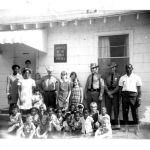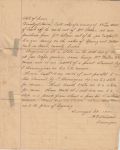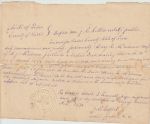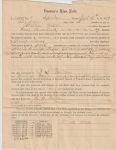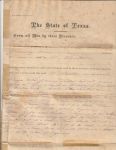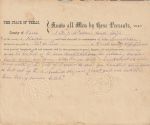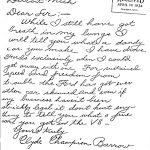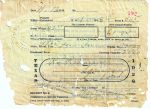Archives

There are so many documents and photos in our collection and so little wall space to display them all. A huge “thank you” to Roger and Robin Farnsworth with The History Taskforce. They spent untold hours digitizing most of them. Also, thank you to Cindy for the use of her equipment to make it all happen.
NEW [April 10, 2025] – click here to Visit our searchable database of digital archives. Please note: you will need a google account and will need to be logged in to that account in order for the search funtion to work.
The Amazing Robert Lee Robinson
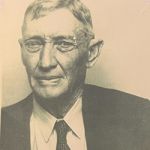
Look at the origin of any community, town, or city; and you find creative, clever, hard-working individuals at the helm of development, lighting the fuse for an explosion that will blow vibrant life into a new settlement! So it was with Spring, Texas, at the beginning of the 20th century. One of those fuse-lighters was Robert Lee Robinson who helped turn a railroad camp into a thriving town.
In 1902, the present area of Old Spring was developed by R. L. Robinson. Robinson, as Depot Agent in Spring for a total of twenty-five years, subdivided forty acres acquired from the railroad, an area that became known as the Robinson Addition, the space on which the shopping village of Spring sits today. Located adjacent to the new depot built around 1900, the property was divided into lots and blocks with provision for streets and alleys to serve the sections. Robinson did not stand still; on this property he built a large mercantile, a “strip center” with small stores to serve ambitious merchants and space for a post office, and an attached blacksmith shop. As others also started to build in the Addition, Robinson constructed twelve or more rent houses and his own residence. Many of those houses still stand today on Main and Preston Streets.
In addition to his work for the railroad and his role as developer and landlord, this gentleman created and operated the first Spring water system. With a convenient water source at his disposal, Robinson had the town’s first in-door plumbing installed in his own home.
Always with an eye for progress, he capitalized on his role as a produce broker. In 1899, in cooperation with the railroad, he shipped the first box car load of potatoes from Spring to the Eastern U.S. market, a business which he continued until 1936. Since preservation of produce was essential on these overland shipments, the railroad built Robinson an ice box in Spring that held ice used to cool the refrigerator cars employed for moving produce long distances.
In terms of community service, Robinson was partially responsible for the creation of the Spring Independent School District in 1907, and he was elected to the first board of school Trustees. In 1910, Robinson was a founding member of Spring State Bank. To promote the town, he served as director of the Spring Chamber of Commerce, sending letters and flyers out to publicize the community and encourage people to move to the area.
Robinson and his wife, Elizabeth Ehrhardt, were philanthropists, donating land to churches and contributing to other charitable causes. They supported the semi-pro baseball team with a field location on Main Street.
You can see, Robert Robinson defined the term “amazing”! We might even go so far as to claim him as the “Father of Spring.” Surely, all would agree that R.L. Robinson’s acts and accomplishments at the beginning of the 20th Century did much to infuse growth and energy into this farming and railroad town just coming into its own!
In 1902, the present area of Old Spring was developed by R.L. Robinson.
…might even go so far as to claim him as the “Father of Spring”!
In addition to his role as developer he also created and operated the first Spring water system.
In 1899 he shipped the first box car load of potatoes from Spring to the Eastern U.S.
Robinson and his wife Elizabeth donated land to churches and other charitable causes.



